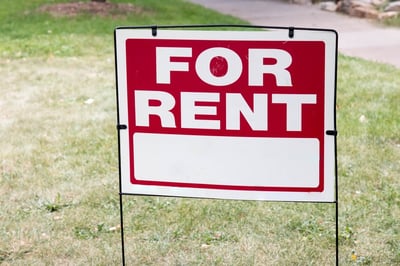Why Multifamily Operators Should Care About Hold Times
by Donald Davidoff | Oct 20, 2016 12:00:00 AM
 Over the past 10 years, multifamily housing (MFH) has seen rapid adoption of automated pricing and revenue management (PRM) systems. Based on interpretations of public statements from the relevant vendors, I estimate at least 5 million units are now priced using some form of automated PRM system.
Over the past 10 years, multifamily housing (MFH) has seen rapid adoption of automated pricing and revenue management (PRM) systems. Based on interpretations of public statements from the relevant vendors, I estimate at least 5 million units are now priced using some form of automated PRM system.
Yet there are still many business practices that affect optimizing revenue for all MFH operators, whether on an automated system or not. One of the most critical is the “hold time,” or the amount of “built in” vacancy operators are willing to accept when taking a lease.
Hold Time Defined
Let’s start by clearly defining “hold time.” This metric is the accepted vacancy period inherent in any new lease. Simply put it is:
-
Leases on a vacant unit: the time from application date to move-in date
-
Pre-leases for a unit on notice: the time from the expected move-out of the departing resident to the move-in date of the new resident
Why Care About Hold Times
In the simplest example, take a unit available for move-in a week from now. Imagine that you lease the apartment on a 30-day hold (i.e. a move-in 5 weeks from now). The good news is you’ve reduced your exposure; the bad news is that there’s a good chance another prospect would show up in the next week or two ready to move in sooner. So by taking that first lease, you’ve induced a full month of vacancy when future demand would likely only cause 1-3 weeks of vacancy.
In other words, you’ve missed out on 1-3 weeks of additional rent. Aggregate that across even 5% of a 15,000-unit portfolio with 50% turnover with an average rent of $1200 and you’re talking about close to $1,000,000 of extra vacancy loss. Put a 6% cap on that, and now we’re talking north of $16 million of portfolio value dilution.
Of course reality is a little more complex as there are multiple exposed units. Revenue management principles (which are valid whether you price using an automated PRM system or do so manually) teach us that move-in week (MIW) is part of the “product.” So we can think of our exposed units as being different products based on their unit type (UT) and MIW. It’s almost like having a shelf of different brands and flavors of cereal, and we want shelf-space for each one. If we hold a unit that comes vacant 2 weeks from now for another 3 weeks, we could have sold the unit in that UT that was available 5 weeks from now thus “saving” the first unit for possible nearer term demand.
We don’t always have product in each “shelf slot,” but a) the basic principle generally holds and b) most prospects have some flexibility to move in a little sooner or a little later depending on what we have available. The idea is to match the demand (INCLUDING future demand) to the supply.
The key point is that it’s all about “displacement analysis.” In other words, if we take one piece of demand, are we displacing a future piece of demand we would have preferred? The shorter the hold times, the less likely we’ll displace future demand.
At the same time, we have to balance this with providing some flexibility for new prospects/new residents in order to make intelligent decisions about accepting vacancy loss and thus the potential displacement. At the extreme, a 1-day hold rule would minimize induced vacancy but it probably would come across as inflexible and not very customer-centered.
The reduction in induced vacancy simply wouldn’t justify the resulting loss of leases. It’s also important to point out that the likelihood of causing displacement is different for vacant units than it is for units that are weeks away from becoming vacant. Because relatively little demand comes for very quick move-in (<7 days), hold times for vacant units usually can be a little longer than those on notice with availability 2-6 weeks out without actually causing extra displacement.
Lastly, another important scenario to discuss is situations where significant unleased vacant exposure has piled up (e.g. 4% or more). In these scenarios, we can (in fact should) extend hold times on those vacant units since we aren’t likely to actually displace future demand. As an example, let’s say we have 100 1BR homes and we typically lease about 4 a month. If only 1 or 2 units are vacant unleased, then holding them more than 2 weeks could likely displace future demand. But if 4 or 5 units are vacant unleased, the chance that there’s enough demand in the next 3-4 weeks to lease them all is very low. So holding a home 2-3 (even 4) weeks is very unlikely to be, in hindsight, a bad decision (intentional double negative).
Overall, controlling hold times can increase NOI and portfolio value by a significant amount. In general, hold times greater than 5-7 days begin to erode NOI and portfolio value by “displacing” future demand that would have moved in with less vacancy. This “induced vacancy loss” can be avoided with explicit hold time policies and management attention.